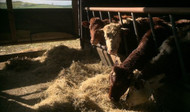How to feed fruit and vegetable plants
 Liquid V's granular or bulky feeds
In general granular or bulky feeds like seaweed, manure or compost take longer to have an effect as they need to break down n the soil first. Liquid feeds, on the other hand, are readily available to your plants and will have an immediate effect.
It is a good idea to apply bulky organic feeds at any time of year to improve the long term health of your soil. If treating a specific issue or to give a plant a boost it will be more beneficial to use a liquid. Remember a liquid doesn't build the soil so they should always be used as a addition to your broader soil feeding regime.
The exceptions to this rule are container grown plants. They will always need direct feeding because of the limited root space available to them and the fact that they are growing in a simple growing medium like peat. Peat, coconut fiber or peat free compost has has very low nutrient levels so your plants will need a supplementary feed.
Liquid V's granular or bulky feeds
In general granular or bulky feeds like seaweed, manure or compost take longer to have an effect as they need to break down n the soil first. Liquid feeds, on the other hand, are readily available to your plants and will have an immediate effect.
It is a good idea to apply bulky organic feeds at any time of year to improve the long term health of your soil. If treating a specific issue or to give a plant a boost it will be more beneficial to use a liquid. Remember a liquid doesn't build the soil so they should always be used as a addition to your broader soil feeding regime.
The exceptions to this rule are container grown plants. They will always need direct feeding because of the limited root space available to them and the fact that they are growing in a simple growing medium like peat. Peat, coconut fiber or peat free compost has has very low nutrient levels so your plants will need a supplementary feed.


For example an average tomato feed is labelled as 6:3:10. It has 6 nitrogen (N) for foliage, 2 phosphorous (P) for healthy roots and a high 10 potassium (K) to produce all the fruit we're hoping for. Cabbage, broccoli, chard and other leafy crops will benefit from a high nitrogen feed. Feeds high in nitrogen should be avoided on fruiting plants, however, as they will grow lots of lush foliage at the expense of the fruit.

The major NPK nutrients are in a refined, soluble form in chemical fertilizers which means they don't benefit the soil and are easily washed through into the ground water. NPK is also present in organic fertilizers but they tend to be in a slow release form, usually with some extra bulk which feeds the soil life as well as your plants. Where possible it is always better to use slow release organic fertilizers than artificial for this reason.
Use the minimum possible With a direct feed, whether artificial or organic, you should use as little as you can. It does not follow that if some is good then more will be better as plants can only use a certain level of nutrients. The excess will be wasted or, worse, run off into water courses and cause algae growth and problems down the line.
Nitrogen will result in lush, leafy growth. Adding too much causes fast and weak growth which leaves your plants open to attack by pests or disease. In the case of fruiting plants excess nitrogen will also reduce fruit yield and quality.

